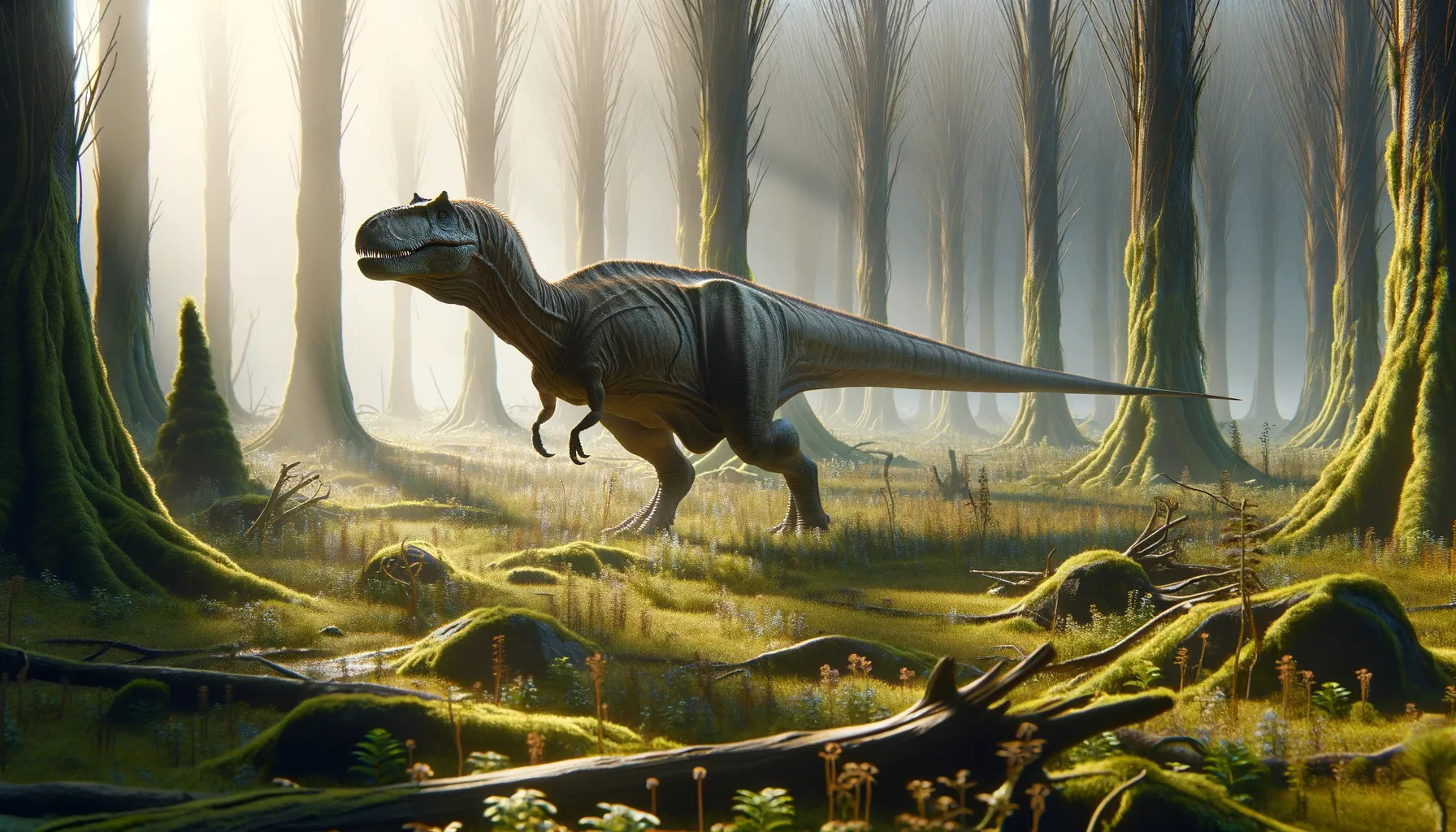
Siamodon
Grazing through the ancient lands of Thailand.
Period
Cretaceous
Length
It was roughly 5 to 6 meters long.
Height
It stood approximately 2 to 3 meters tall.
Weight
It weighed around 1.5 to 2 tons.
Siamodon was a herbivorous dinosaur that roamed parts of modern-day Thailand during the Cretaceous period. Known for its distinct dental structure, it was well-adapted to its plant-rich environment. Despite not being the largest of its kind, Siamodon had a robust build and a relatively short but sturdy tail, which aided in its balance and stability as it grazed on low-lying plants and shrubs.
Diet
Siamodon was a plant-eater, feeding primarily on the lush vegetation available in its environment. Its teeth were specially adapted to handle tough plant materials, enabling it to efficiently consume and digest a variety of flora.
Hunting
As a herbivore, Siamodon did not engage in hunting. Instead, it would have spent much of its time browsing for plants and leaves to sustain its massive build.
Environmental challenges
Siamodon faced challenges such as fluctuating climate conditions which affected the availability of food. Predators in its environment were also a constant threat, requiring vigilance despite its large size. Additionally, changes in plant life due to geologic events could impact its food sources, sometimes forcing migration to new areas.
Speed
This dinosaur was not particularly fast due to its bulk.
Lifespan
It likely lived for several decades.
First discovery
Its fossils were first found in Thailand.
Fun Facts
- Siamodon is a lesser-known dinosaur that lived during the Early Cretaceous period.
- This dinosaur was discovered in what is now Thailand, giving it a unique place in Asian dinosaur history.
- Siamodon is believed to have been a herbivore, dining primarily on plants.
- The name 'Siamodon' means 'Siam tooth', referencing the ancient name for Thailand and its dental fossils.
- Siamodon is part of the Iguanodontia group, known for their thumb spikes and plant-eating habits.
- While not much is known about the complete skeleton of Siamodon, its teeth tell a lot about its dietary habits.
- Siamodon's fossils provide important clues about the diversity of dinosaurs in Southeast Asia during the Early Cretaceous.
Growth and Development
Siamodon likely followed a steady growth pattern, taking several years to reach full size. Its juveniles needed to avoid predation, which was a significant risk before attaining a size where they were less vulnerable. Growth would have been influenced by the availability of nutrients and suitable habitat space.
Habitat
It thrived in a primarily temperate environment, characterized by abundant plant life. The presence of water bodies in its habitat would have been crucial for both drinking and supporting the growth of its food sources. Seasonal changes could impact its migratory patterns as it sought resources.
Interaction with other species
Siamodon coexisted with various other dinosaur species, most of which were also herbivores. These interactions could include competition for food resources. Predatory species were part of its ecosystem, requiring Siamodon to be alert and often rely on the safety of numbers in groups.
Natural lifespan
Siamodon might naturally live for about 50 to 60 years if environmental conditions were stable.
Reproduction
Siamodon likely reproduced by laying eggs, like many other dinosaurs of its time. Nesting sites would need to be in sheltered areas to protect against predators. Parenting behavior might have included guarding nests to ensure the young hatched safely.
Social behaviour
Siamodon may have lived in herds, which provided mutual protection from predators. Social structures could include basic hierarchies, especially during feeding or mating seasons. Group living also meant young had better survival odds.
Fossil locations
Notable Siamodon fossils have been located in Thailand, indicating its geographical spread during the Cretaceous period. The discovery of these fossils has helped paleontologists understand the diversity of dinosaur fauna in Southeast Asia.
